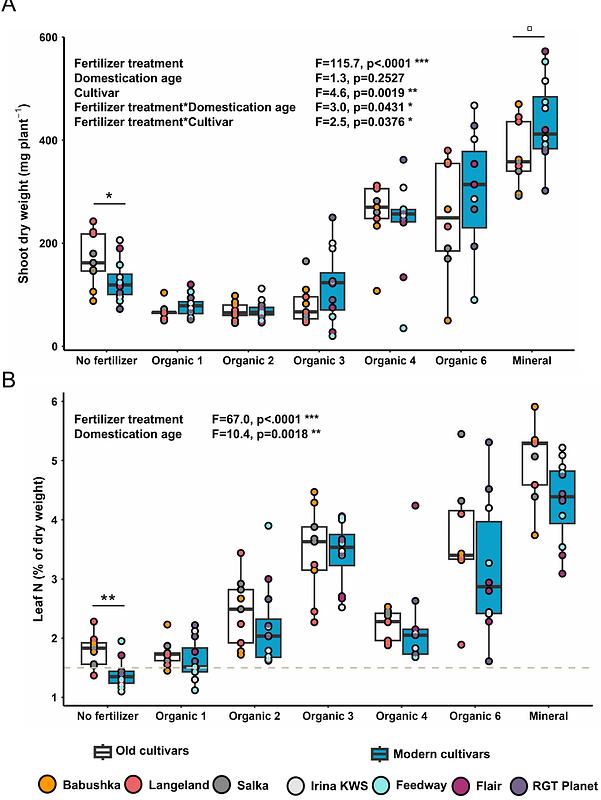Fertilizer and cultivar affect the barley rhizobiome, while domestication age only affects growth at low nutrient levels

Fertilizer and cultivar affect the barley rhizobiome, while domestication age only affects growth at low nutrient levels
Kindtler, N. L.; Sheikh, S.; Richardy, J.; Krogh, E.; Maccario, L.; Vestergard, M.; da Fonseca, R. R.; Ekelund, F.; Laursen, K. H.
AbstractModern plant breeding has provided barley cultivars that produce high yields when supplied with ample amounts of mineral fertilizer. This narrow selection criterion may have reduced key traits facilitating vital microbiome-plant interactions. Here, we investigated the performance of three old and four modern barley cultivars grown at different fertilizer regimes and assessed the root microbiome composition using 16s rRNA amplicon sequencing. The objectives were to investigate: i) nutrient availability effects on nutrient uptake and biomass production and, ii) how domestication age, cultivar, and fertilizer treatment affect the root microbiome. Without fertilizer, old cultivars outperformed modern ones in terms of biomass and had higher leaf concentration of nitrogen, potassium, sulphur, iron, zinc, and copper. This suggests that older barley cultivars retained the ability of their wild ancestor to collaborate with the soil microbiome resulting in improved nutrient acquisition in low-input systems. Interestingly, domestication age did not significantly affect the diversity of the rhizo-microbiome, which was instead dependent on individual cultivar and fertilizer treatment.